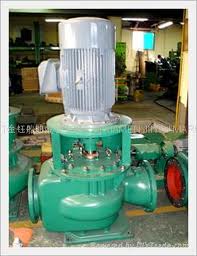
Pumps play a major part in marine vessel operations as they contribute in many different aspects from cooling, ventilation and disposal of waste, to name a few, among many more. A variety of liquid, air and vacuum pumps are used on board ships for different operations but they all share one thing in common- they are very durable. This is ensured because sea or ocean water is salty which causes corrosion of metal. With this in mind vessel pumps are built using special metals that corrode slower in contact with salty water.
Metals like aluminum, polyethylene, copper and copper alloys are used to manufacture marine pumps. These metals and alloys do not get corroded by salty water thus lasting longer on ships. Some of these pumps are coated using these metals to create a layer above the corrosive metal and others are wholly built of the non corrosive metal.
As mentioned above there are many pumps on ships and now we shall learn about some of them and there uses on board ships.
- Engine cooling pump– this pump is used to supply the engine with cooling water to avoid the engine from overheating which could damage the engine. Most vessels suck water directly from to ocean/sea to cool to engine.
- Bilge pump– this is a pump that is used to pump bilge water to bilge storage tanks were they will be disposed of in the right manner. Water and fuel some times seeps in and accumulates in the bilge of the vessel and these pulps are used to collect it.
- Horizontal pumps-these are pumps that require a source that is at the same level or above the pump level. They are used to transfer liquids from a lower level to a higher place. The height that they move the liquid depends on the pump calibration, motor size.
- Cargo pumps– mainly found on tankers these are used to pump liquids cargo from the vessel storage tanks to land based storage facilities. They are usually fixed on the ship and have universal couplings and a variation of attachment sizes so that offloading of cargo can be done at any port.
- Fuel pumps-due to the large amount of fuel required to operate a ship or boat, they have a special fuel supply pump that transfers fuel from the tank to the engine. It is special in that the pump is build to be static free. This means no static can accumulate which can spark and start a fire. Compared to other pumps on board it is a relatively small pump but one with huge relativity.
- Aerator/spray pumps– as the name portrays these pumps are mainly used for maintenance operations aboard the vessel. Usually used for cleaning and washing duties they can also be helpful to dousing fires on ships of oil rigs.
- Ventilation pumps– these are air pumps used to ventilate living area and other places within the ship that can accumulate gases that can be dangerous to crew members or be explosive when in big amounts. Areas like the fuel tanks, battery storages are places that can accumulate explosive gases.
- Water circulation systems- these pumps are used to supply different areas of the vessel with clean water. It may be drinking, bath or lavatory water.
Pumps play major roles onboard vessels as they are used to supply or dispose of different liquids and gases. They have also contributed towards the designs of ships since these liquids no longer need to flow by gravity making more space for other utilities on board modern vessels.
In our later articles we will study about these pumps, one by one, in more detail.
References:
Books – Centrifugal Pumps and Allied Machinery by Frank Ward Sterling.
– Ship Bilge Pumps by Thomas James Oertling.
Vessel Pumps,






